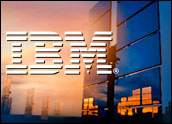
While consumers await the release of Windows 8 and theexpected announcement of Apple’s iPhone 5, former desktop leader IBMannounced on Tuesday the release of a new line of mainframe computers.The new ZEnterprise EC12 was designed to handle the latest computingchores, including data center consolidation and cloud computing.
Mainframes actually remain the workhorse in many industries, anddespite predictions of the imminent death of the machines, thetechnology is still quite viable and in some cases necessary.
“That image of the mainframe being passe is very common,” JoannaBrewer, IBM spokesperson, told TechNewsWorld. “We’ve completely renovated the systems. Ithas advantages as a platform for cloud computing and operationalanalytics. This has given it a new lease on life.”
And while consumers may do their computing on laptops and increasinglytablets, mainframes often offer a higher level of security and reliability.
“The mainframe remains the platform of choice for enterprise-criticalcomputing,” Charles King, principal analyst at Pund-IT, told TechNewsWorld. “Anytimeyou are using a credit card, that transaction is probably completed onthe backend on a mainframe.”
Different Needs
The fact that this older computing technology remains in use may besomewhat surprising, especially given the computing power of asmartphone or tablet today. But then again, today’s mainframes aretruly supercomputers. And understanding what exactly a mainframe isremains the key to understanding why it is still so viable today.
“Even industry experts can get confused in today’s computerterminology by giving names such as mainframes,supercomputer, grid, cloud and virtual computing,” ChrisLucena, chief technology officer at Phyaura, told TechNewsWorld. “Mainframes are picturedas these monstrous computing systems that take up a whole room andcompute big data such as census information, and that’s exactly whatthey are.”
But mainframes continue to offer computing power that even today’shighest performance desktop just can’t handle.
“If you were to compare a mainframe to a traditional enterprise server,I would reference the recent Olympics,” added Lucena. “Think of thetraditional enterprise server as Usain Bolt being able to do a 100meter dash in 9.63 seconds. Then you have your mainframe who isStephen Kiprotich, doing a 26-mile marathon in two hours and eightminutes. The marathon runner obviously takes longer but covers moreground; whereas the 100m dash runner covers less ground but in muchlesser time.”
Mainframes also could see much more of a comeback simply because ofthe big technology catchphrase of this year, namely “big data.”
“Mainframes are meant for big-data computations where reliability,security, and availability are important,” said Lucena. “I don’t seethem going away any time soon because major industries such ashealthcare are starting to need these types of computing power toprocess big data analytics now that healthcare data is now availabledigitally.”
Main and Emerging Markets
For those reasons, the 47-year-old IBM platform remains one that likelywon’t be replaced anytime soon. And while the sales of mainframes onlyaccount for 4 percent of IBM’s revenue, the mainframe is actuallyseeing growth, thanks in part to new markets that are looking to itsreliability.
“We’re seeing growth in emerging markets, with customers in Africa andcustomers in Russia,” Brewer told TechNewsWorld. “The reason for thatis that those emerging markets wants the level of security that themainframe offers. The total cost of ownership is also veryattractive.”
The other emerging market isn’t someone on the globe, but rather the clouds.
“This isn’t your grandfather’s mainframe; it has been massively updatedan enhanced,” Rob Enderle, principal analyst at the EnderleGroup, told TechNewsWorld. “The mainframe’s advantage is massive IO and the ability tohandle equally massive utility level loads. This is the kind of thingyou need for heavy cloud and hosted applications, and System Z can runvirtualized Linux and Windows sessions, so it can run contemporaryapplications as well making it good for consolidation.”
Mainframe Comeback
The irony is that had the mainframe truly been phased out, it probablywould have made a comeback anyway — simply because it is what neededto handle this time of computing.
“It is kind of funny how the pendulum swings,” added Enderle. “Themainframe almost died out when the market moved to massive distributedenvironments, but cost containment and security, particularly physicalsecurity, are forcing consolidation again, which likely explains whySystem Z, IBM’s mainframe, has become uniquely successful again.”
The final equation in this is whether something could replace themainframe. But that remains unlikely in the near future.
“The mainframe won’t be unplugged anytime in my lifetime,” added King.”I expect it survive for another generation or two at the least.”





















































